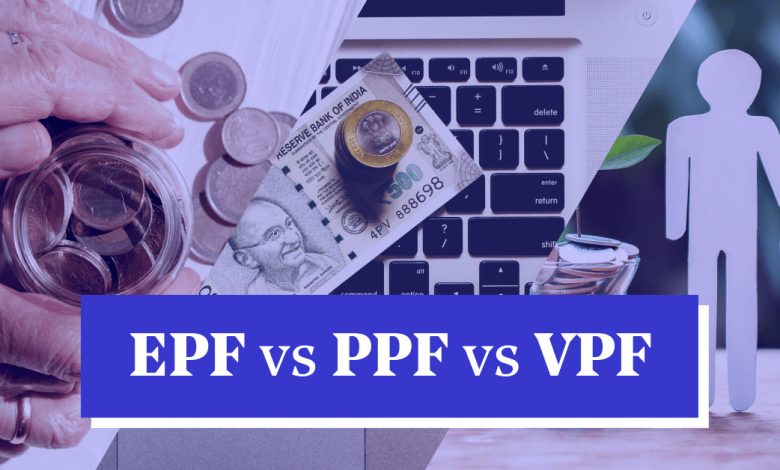EPF vs PPF vs VPF: A Comparative Look at the Most Suitable Savings Schemes

In the sphere of saving schemes in India, some of the well-reputed torchbearers are Employee’s Provident Fund (EPF), Public Provident Fund (PPF) and Voluntary Provident Fund (VPF). Here’s a detailed comparison of various features between EPF, PPF and VPF, focusing on vpf vs ppf schemes, in particular.
Employee’s Provident Fund (EPF)
EPF is a mandatory retirement saving scheme vented by the government for salaried individuals. Employers and employees contribute an equal amount (currently 12% of basic salary and dearness allowance) each month. The current EPF interest rate is 8.5% p.a. which is risk-free and guaranteed by the Government of India. Taxes do not apply to the contribution, interest earned and withdrawal amount, making it fall under the EEE category (Exempt, Exempt, Exempt).
Public Provident Fund (PPF)
PPF is a long-term saving scheme with a lock-in period of 15 years, making it a go-to option for risk-averse investors. It offers an expanse for not only salaried individuals but for any individual seeking long-term savings. Brought into existence in 1968 by the National Savings Organization, PPF is currently offering an interest rate of 7.1%. Contribution towards PPF up to Rs 1.5 lakh in a year is tax-deductible under section 80C; the interest earned and the amount received on maturity are also not taxable, landing it in the EEE category.
Voluntary Provident Fund (VPF)
VPF, also known as the voluntary retirement fund, is the voluntary fund contribution where the employee can contribute more than the mandatory 12% of their salary towards the provident fund. This contribution is optional and the employee can choose the percentage they want to commit. The interest rate is the same as for EPF, which is 8.5%. VPF also grows tax-free, making it an EEE category investment.
Comparison – VPF vs PPF
A critical analysis between vpf vs ppf showcases prominent features. On one end, VPF allows flexibility in the contribution rate and allows short-term loan facilities. It is only eligible for salaried employees and the employer contribution is not mandated. On the other hand, PPF allows any Indian resident to contribute between Rs 500 to Rs 1.5 lakh per year. However, it has a longer lock-in period.
Choosing the Best Among EPF, PPF and VPF
Deciding the best among EPF, PPF, and VPF depends on individual financial objectives, risk appetite, and career span. If you’re a salaried individual, then EPF is the scheme for you. However, if you are risk-averse with long-term saving plans, PPF would be a good fit. On contrast, if you have a substantial monthly income and are willing to contribute more than the mandatory provident fund, VPF would be ideal.
Summary:
The three prominent saving schemes in India – EPF, PPF, and VPF – each serve a distinct niche of savers. EPF, mandatory for salaried individuals, requires both employees and employers to contribute an equal share. PPF is a favourite among risk-averse investors who don’t mind a 15-year lock-in period and don’t have to be formally employed. Lastly, the Voluntary Provident Fund allows employees to contribute more than the mandatory provident fund, suitably adjustable with their salary. Therefore, deciding among EPF, PPF and VPF comes down to individual financial objectives, risk capacity, and duration of the saving plan. Make sure you understand the benefits, risks, and eligibility of each scheme before investing. Remember to consult with a certified financial advisor and wisely plan your investment portfolio.
Disclaimer:
Investing in financial markets involves substantial risks and you should consider all pros and cons before making an investment. Each user must research thoroughly and consult with a certified financial advisor.



